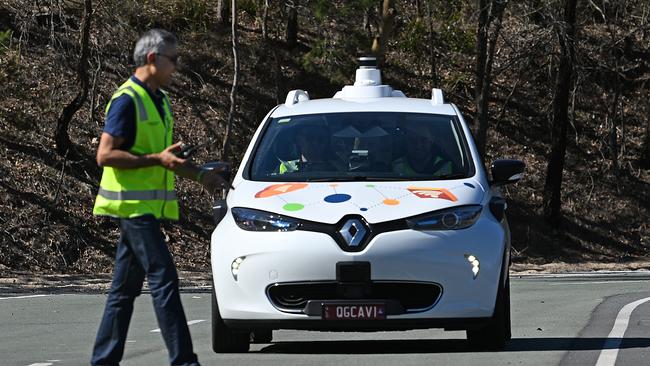Albanese government reveals glimpse of what it believes is ‘high-risk AI’
Unlike the EU, the Australian government hasn’t developed a list of what it believes is high-risk artificial intelligence, but it has offered a sneak peek.
From self-driving cars to robotic surgeons, the Albanese government has offered a glimpse of what it believes will be deemed the high-risk deployment of artificial intelligence.
AI is everywhere. Volkswagen is incorporating ChatGPT into several models of their cars in the guise of an AI-powered voice assistant, while consumer electronic giants are cramming it into anything from TVs to washing machines.
Most of the applications of AI are considered low risk — such as smoothing the action on a TV or having a car dashboard screen respond to questions in a more natural way.
But at the other end of the spectrum are fears the technology will manipulate voters via so called ‘deep fakes’, design weapons of mass destruction and even spark extinction.
Tech titans and business groups have welcomed the Albanese government’s plan to tackle AI’s rampant rise, saying it strikes the right balance between ensuring the community remains safe while not stifling innovation.
This is despite the government saying more work needs to be done to fully define what high-risk AI is. But it has offered some clues.
“In considering the right approach, it is important to recognise there are a range of ways AI technologies are used,” the government wrote in its interim response about the responsible and safe use of AI.
“Many AI tools and applications — for example, to filter spam emails or to optimise business operations — are not new, and are low risk. Other AI applications — for example, to predict a person’s likelihood of recidivism, suitability for a job, or in enabling a self-driving vehicle — are considered higher risk.
“These uses can result in negative impacts for people that are difficult, or impossible, to reverse. It was for this reason that the discussion paper proposed a risk-based approach, focused on setting up additional guardrails to reduce the likelihood of harms occurring in high-risk settings.”

The government promised widespread reforms aimed at tackling AI about 12 months ago, but has been playing catch-up, particularly when compared with the EU, which already has a clear definition for high-risk AI.
The EU broadly classifies high-risk AI as that which affects the safety and rights of individuals. This can include the deployment of the technology across critical infrastructure (water, gas, electricity), medical devices, systems determining access to educational institutions or recruiting people, law enforcement, border control and administration of justice — with biometric identification a particular concern.
The Albanese government acknowledges it can’t over-regulate low-risk AI, which is set to inject up to $600bn a year to the national economy by the end of the decade, while under-regulating the higher-risk application of the technology.
And despite not yet taking firm action, it is an approach which has so far won broad support.
Atlassian regulatory affairs and ethics director, Anna Jaffe, described the government’s response as a “pragmatic first step towards building trust in AI while realising the potential it has to benefit all Australians”.
“In particular, the response acknowledges the current shifting landscape and the associated open questions, unknowns and potential limitations, as well as opportunities,” Ms Jaffe said.
“It acknowledges the role of both current and newly proposed laws in responding to the issues raised by AI, the need to investigate regulatory and non-regulatory mechanisms, and the ways in which international developments and frameworks can influence domestic best practice.”
Business Council of Australia chief executive Bran Black praised the government for opting to strengthen existing laws and regulation rather than create new ones to tackle AI’s rise.
“The use of artificial intelligence can make our businesses more competitive and productive and that’s good for growth, investment and more Australian jobs,” Mr Black said.
“We have always said it is appropriate for the approach to artificial intelligence to be risk-based and use existing laws and regulation where possible, and it is good to see the Government has heard this message.
“Government and businesses need to be nimble and have the ability to deal with both the opportunities and risks that AI provides our economy and businesses. A risk-based approach to further regulation will need to be developed in close consultation with businesses and we welcome the announcement of an expert advisory group to work closely with the Government on these changes.”






To join the conversation, please log in. Don't have an account? Register
Join the conversation, you are commenting as Logout